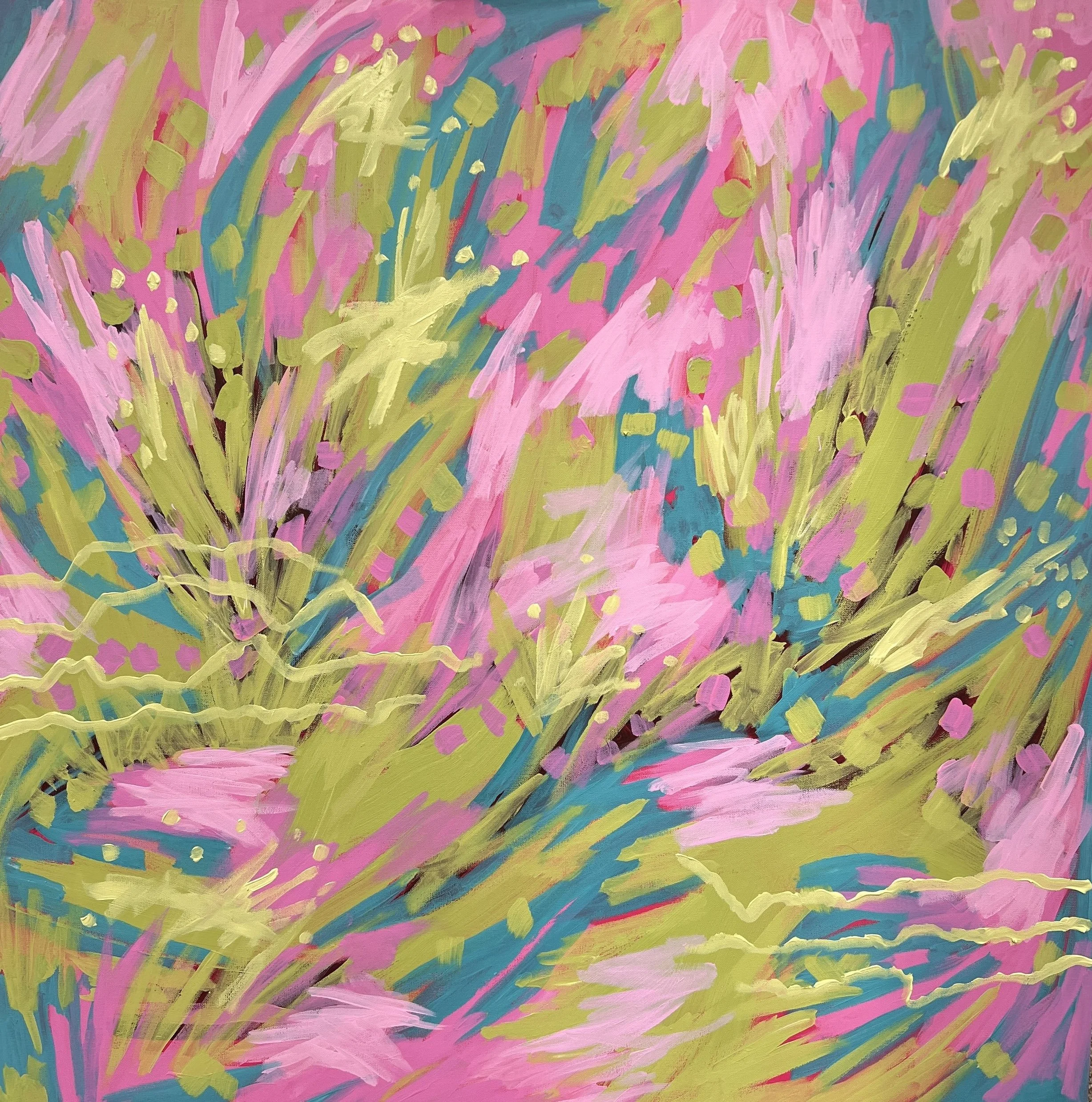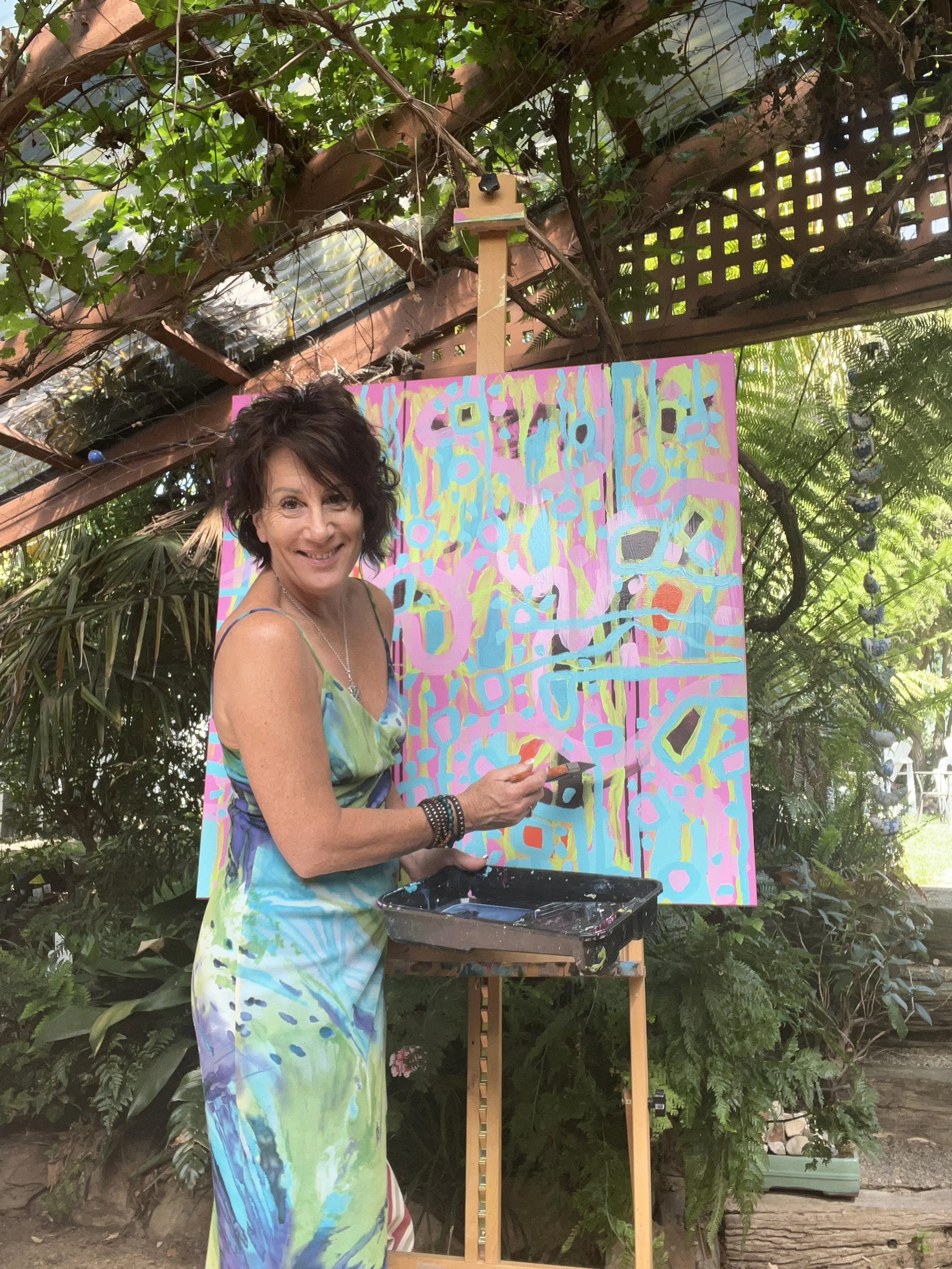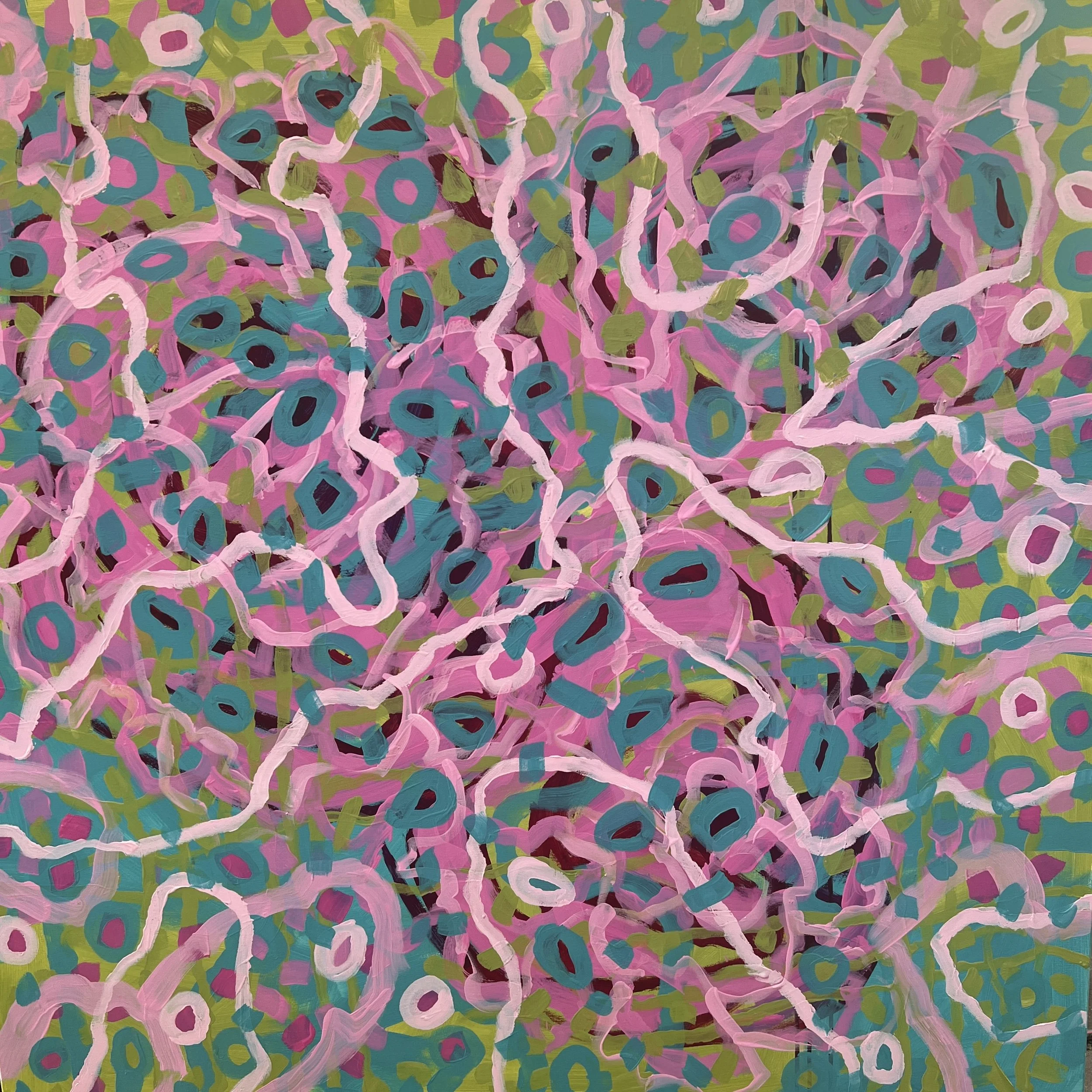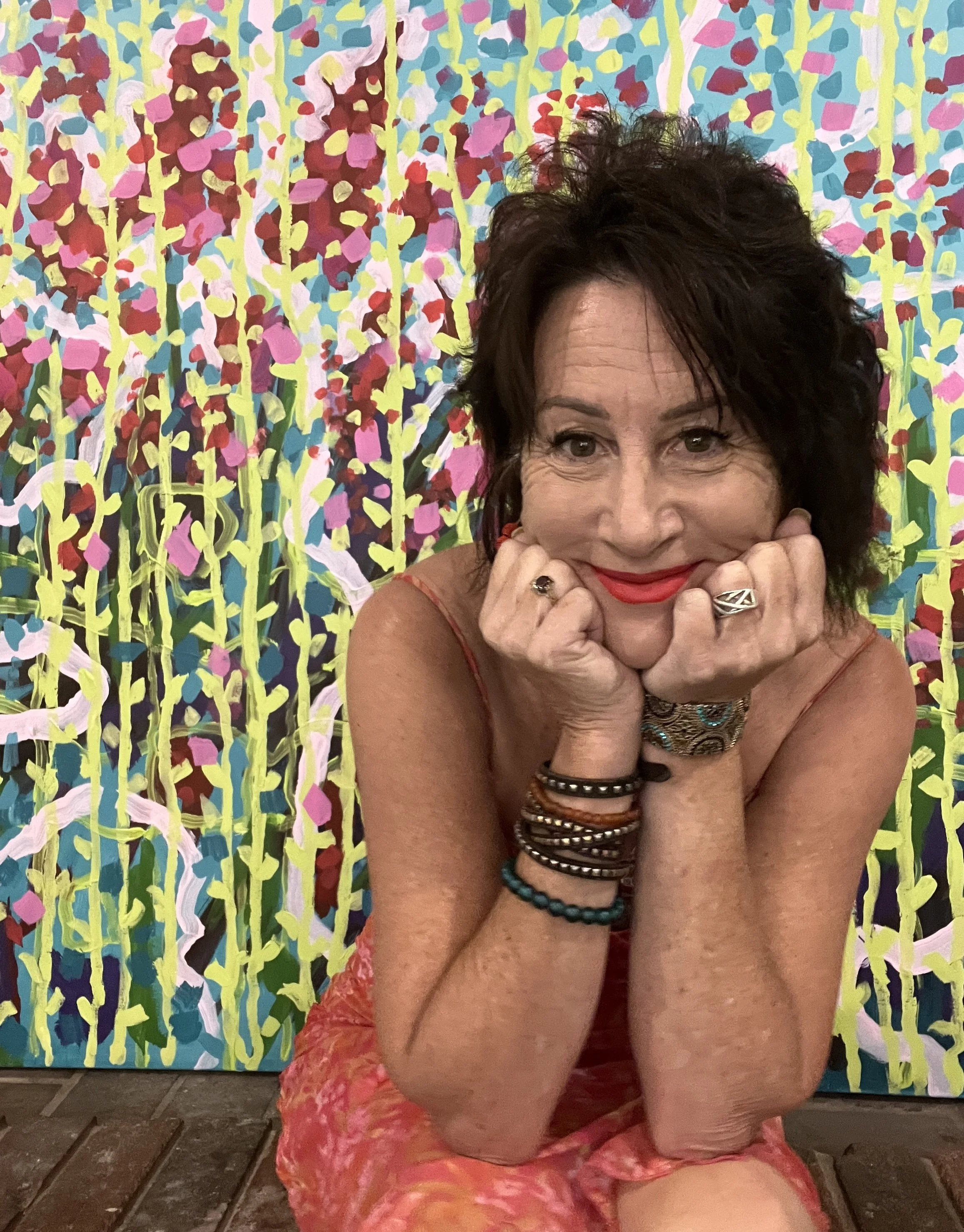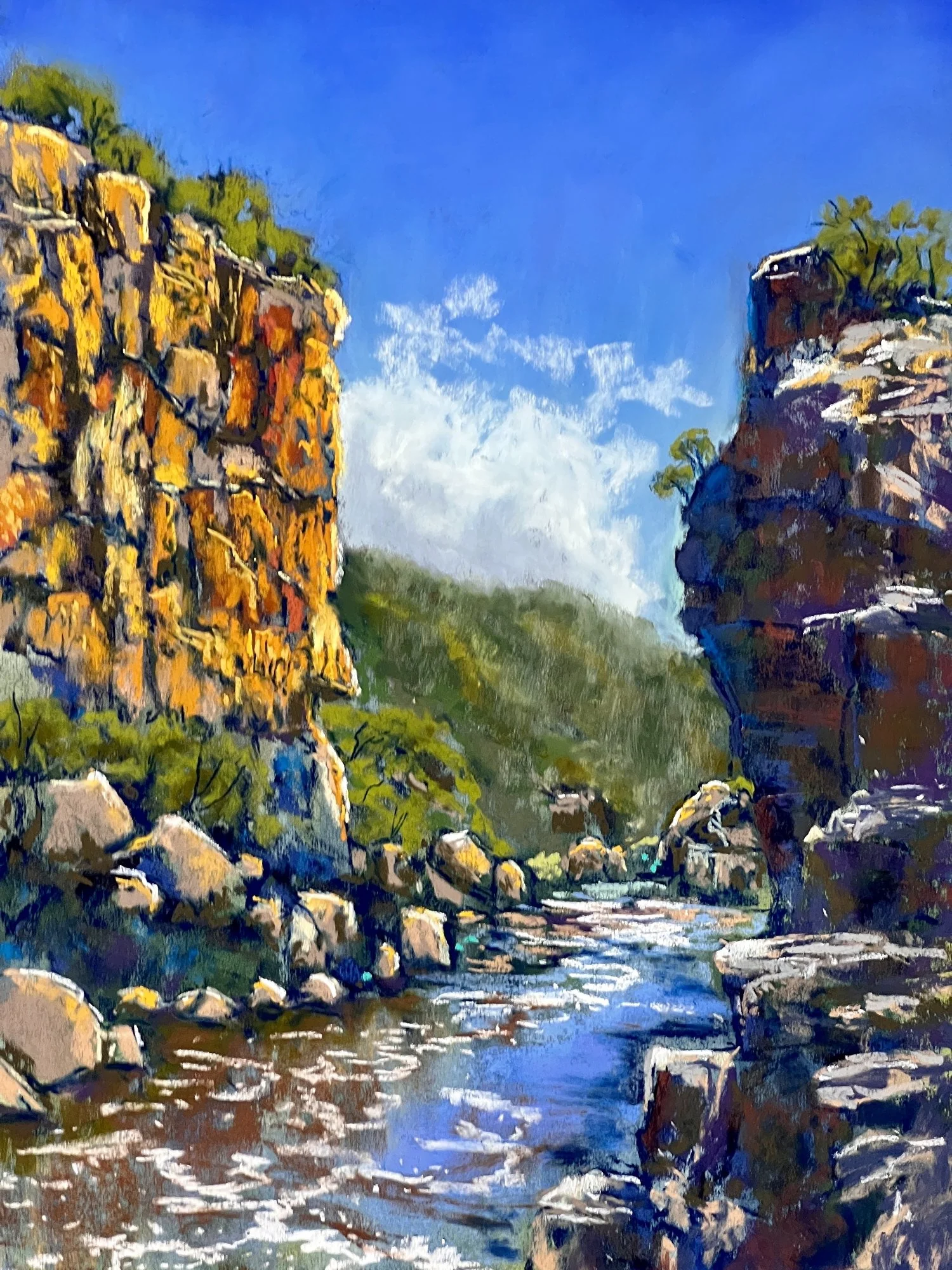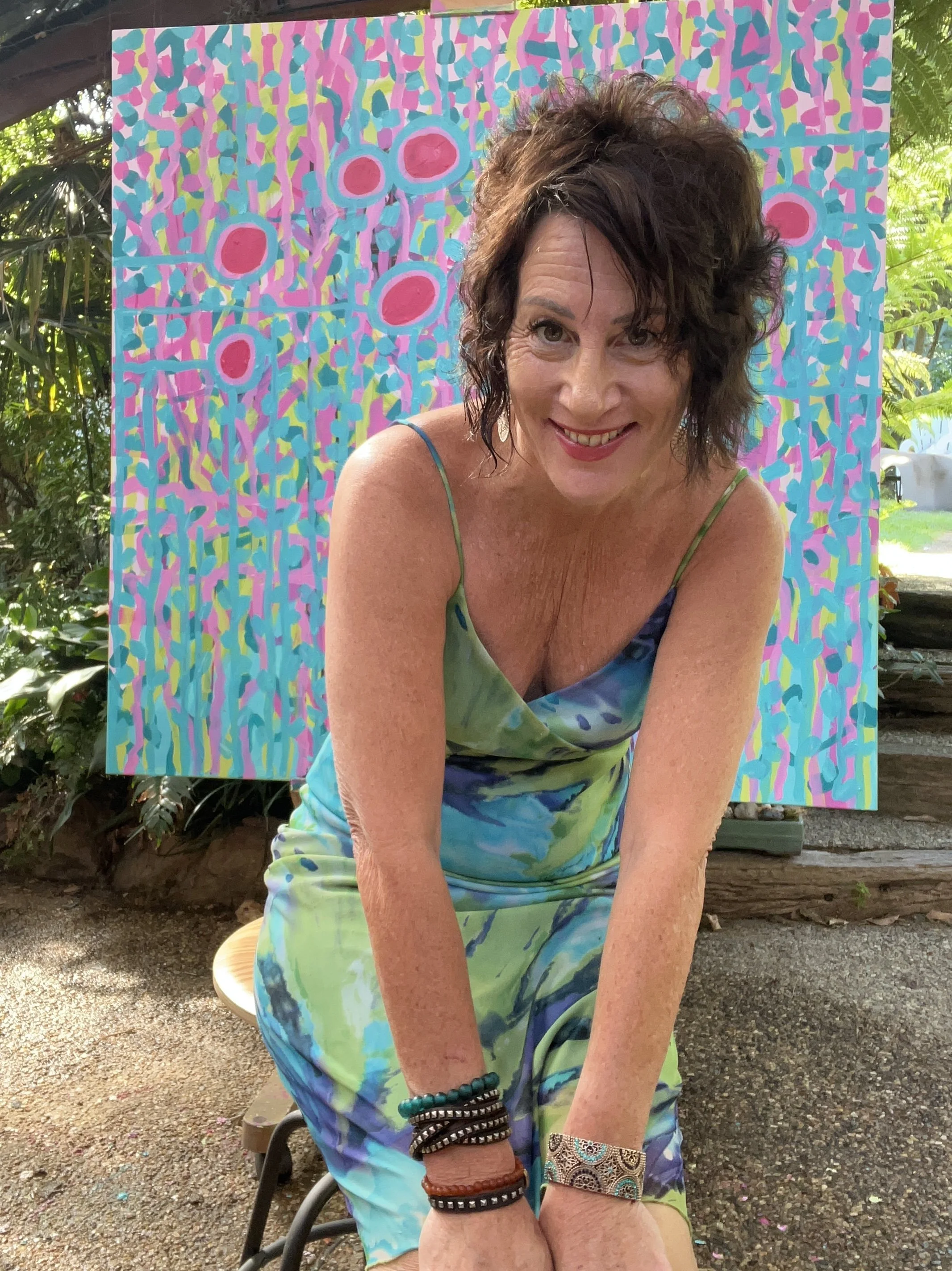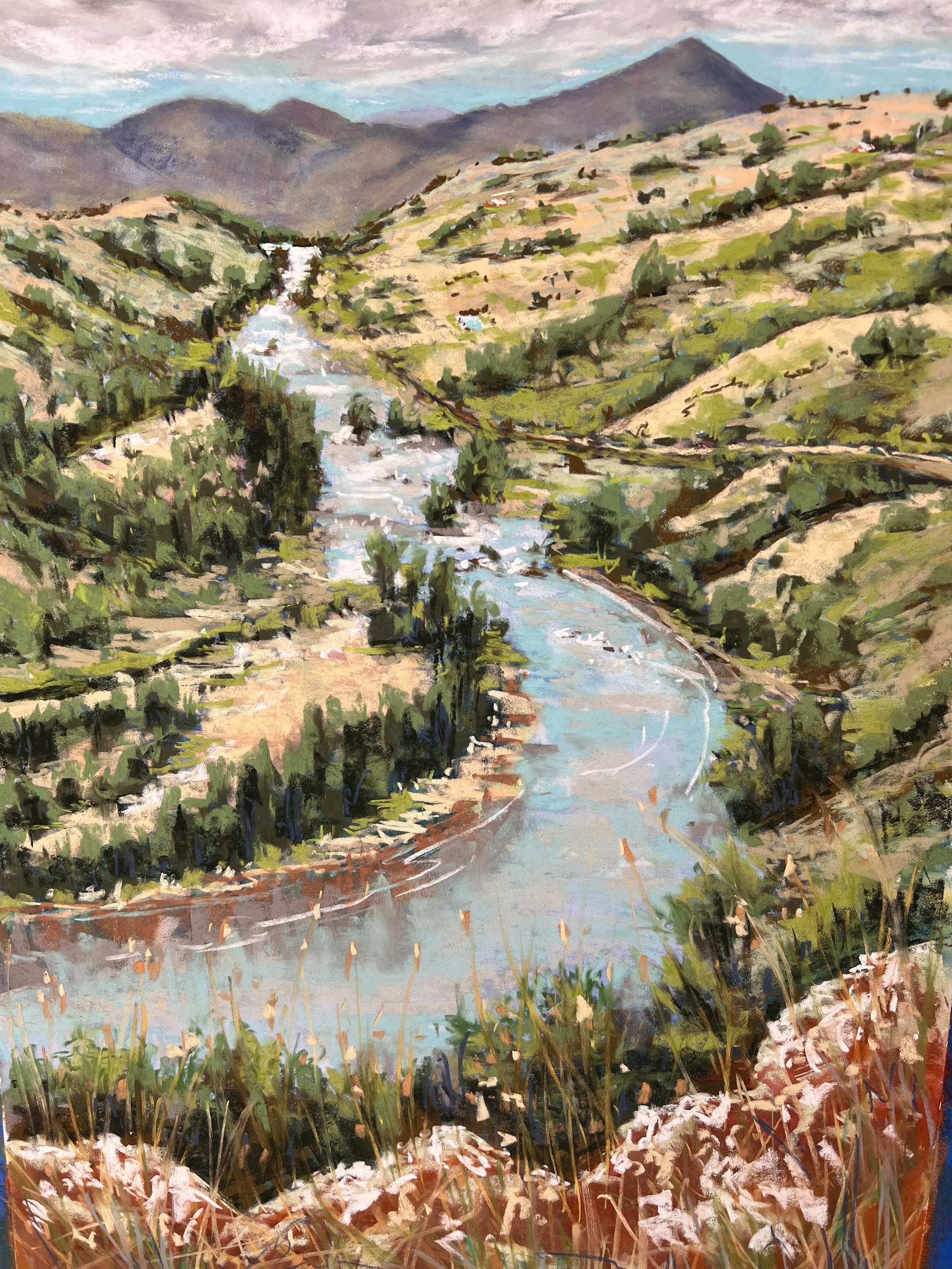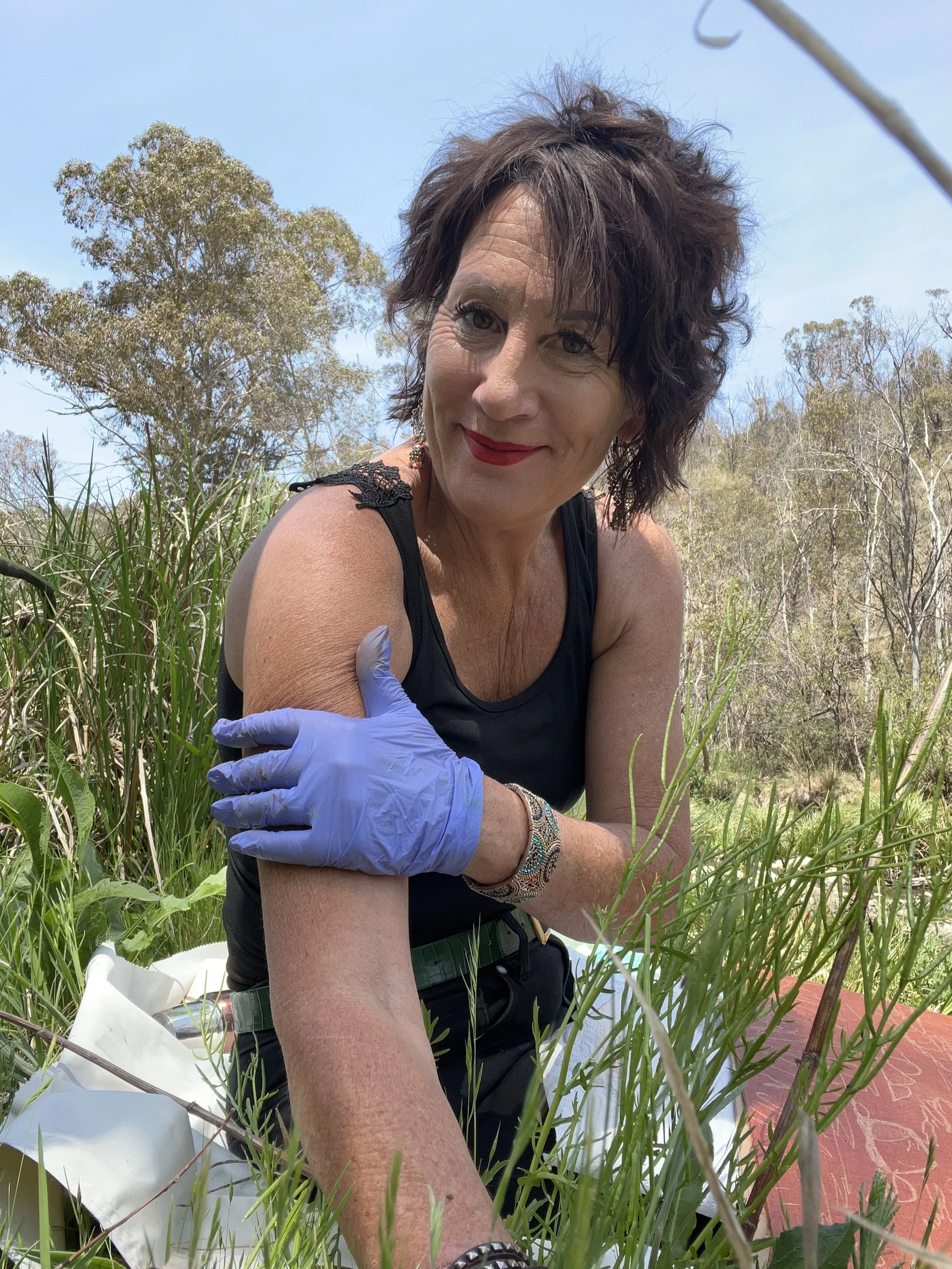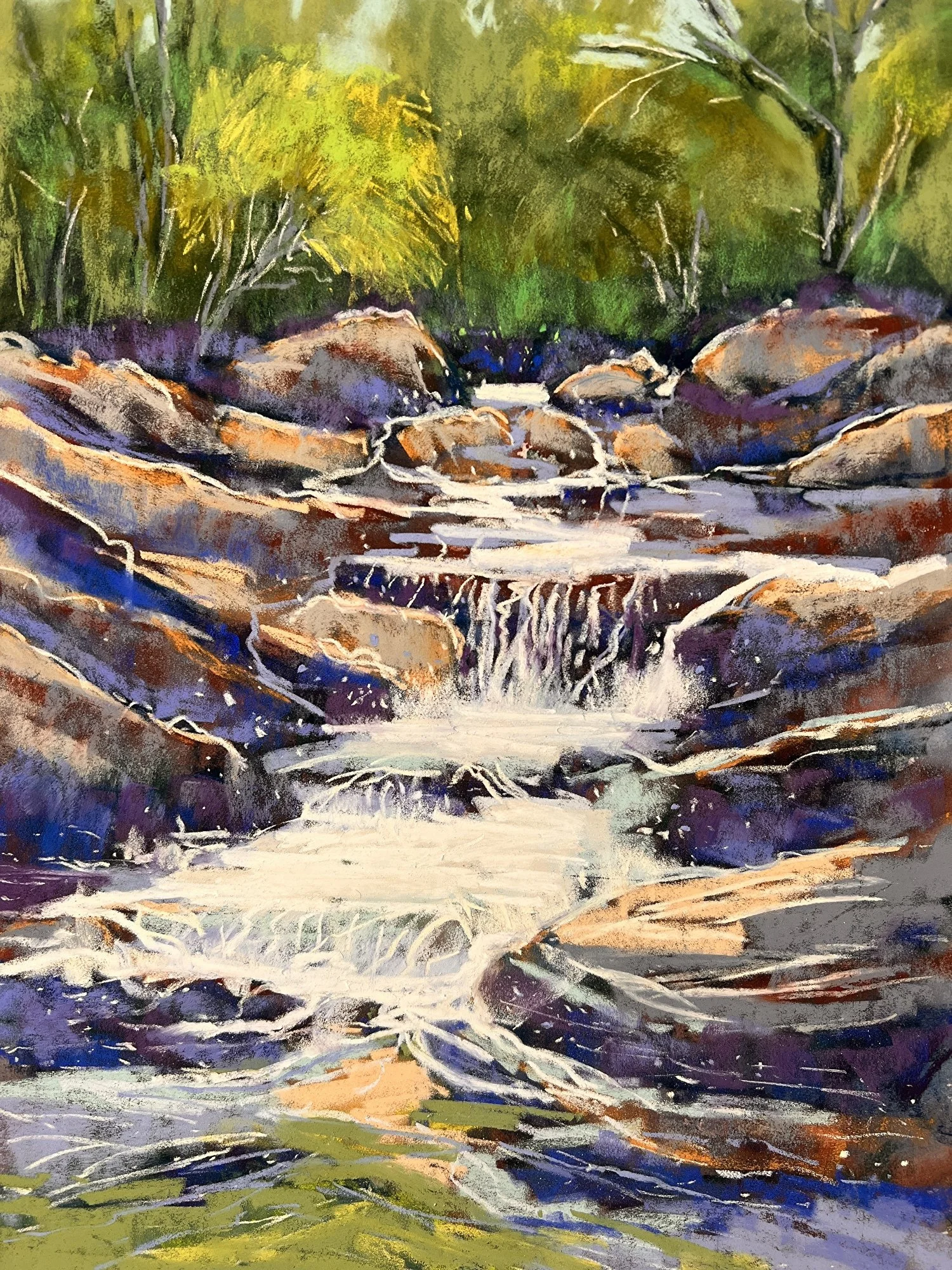Interview with Caroline Reid
Can you share a bit about your artistic journey and how you found your passion for contemporary landscape art?
I am a contemporary landscape artist based in Canberra, Australia, nestled within the inspiring landscapes of Ngunnawal and Walgalu country. This region is the source of our majestic Murray River. The locale is a captivating semi-alpine expanse, framed by mountain ranges to the west and east and bordered by the Snowy Mountains to the south. While my artistic journey has been a lifelong pursuit, my professional career in science policy consumed much of my time until I faced burnout. Seeking rejuvenation, I turned to plein air painting to recover physically and psychologically from a profound sense of responsibility for our wounded natural world, which had left me engulfed in grief. Over time, this grief gradually subsided as I allowed the relentless vitality of nature to mend and revitalize my spirit. The tumultuous years of the pandemic further underscored the importance of cherishing the beauty of my surroundings and deepened my love for the place I call home.
What drew you to contemporary landscape art specifically? How does this genre allow you to convey your unique perspective on the natural world?
My love of landscape painting came early in childhood. It all began with ants! Around the age of four or five, I found myself sprawled on my belly in the hot, sandy embrace of the Western Australian bush up on the hillside on our family property. I watched in fascination and wonder as hundreds of Australian red bull ants, moving with determination and intense concentration, constructed their subterranean realm from the iron-red soil.
I marveled at the intricate dance of these worker ants, meeting and communicating with complicated gestures of their stick-like legs. Some tirelessly labored up and down tunnels, transporting twigs, dirt crumbs, and leaf fragments in their mouths. Others ascended from below, bearing massive lumps of wet dirt that I envisioned as construction cement.
The curiosity burning within me led me to probe the tunnels hidden beneath the earth. I rudely prodded the dirt with a stick, eager to uncover the mysteries of the ant city. However, my intrusion provoked the ire of the ants, and when a determined bull ant bit my big toe, I stopped my subterranean exploration and ran howling home. As my mother tended to my painful ant-induced injury, my animated chatter about the ants, the dirt, and their enigmatic underground world spilled forth. In response, my mother uttered magic words: 'Draw it for me.'
And so, with my toe covered in anesthetic cream, I sketched wriggly winding tunnels, stick-like figures, balls of wet dirt, dry, warm hidden chambers containing eggs, and curled-up baby ants. That pivotal moment was the genesis of my enduring fascination with the land and painting it, especially in plein air, with child-like wonder.
Since that fateful day long gone, the natural world has remained an integral part of my existence, continually weaving its threads into my art practice. The memory of those industrious ants and the underground city they crafted continues to be a source of inspiration, grounding me in a profound connection with the elemental forces that shape our world and determine our lives.
Being in the landscape and then painting how I feel about hills, plants and trees, creeks, and rocks – in styles ranging from realism to abstraction - has become a source of profound happiness, restoration, and a sanctuary where I feel a sense of peace.
What aspects of nature inspire your work the most, and how do you translate those inspirations into your artistic expressions?
The water flow in the Australian landscape is profoundly important for all Australians, including me, especially with my science training. When painting en plein air, I build water into my realist landscape paintings using a watercolor underpainting technique. The underpainting establishes the compositional elements and bleeds through the upper layers of pastel, lending mood or color intensity to the final painting.
The growth of plants as they feed on the energy of the season turning is an aspect of nature that has inspired my latest collection of abstract landscapes. My latest collection, "Florisma" (the collection can be viewed here: https://www.carolinereidartist.com/collections/197132) is inspired by my own garden growth. I have tried to capture the exhilaration I feel at the energetic first awakenings of our Canberra spring right through to the sun-soaked happiness of our Australian summer. I have been attempting to reflect nature's vibrancy in the visual expressions on a canvas.
The sight of the first bees dancing on early spring blossoms in my garden never fails to spark a surge of exuberant energy within me. To catch this joyous energy, I relocated my easel outdoors, painting under the sky, immersing myself in the ever-changing growth. As my brush scratched and pushed across the canvas, the season unfolded, transitioning from the rejuvenating vibes of spring to the sultry warmth and pleasure of summer.
Rather than replicating my garden's details, I allowed each emerging flower – from early apple blossom to the heat of summer red salvias – to inspire my color and brushstrokes. Every two days I start a new painting, and they track the seasons' turning growth. Each canvas is a reflection of the burgeoning life around me in abstract form, inviting viewers of my paintings to feel the pulsating life I did.
How do you develop your artistic voice as a contemporary artist?
Like many artists, I work in series or collections spurned by my emotional response to places. For example, during the two years of COVID isolation, I painted my local region - the Snowy Mountains in the Kosciusko National Park and the Namadji National Park wilderness areas near my home.- and produced my ‘Cloud Country’ collection in realism style (https://www.carolinereidartist.com/collections/175196). This collection resulted in a successful solo exhibition at Raglan Gallery, Cooma in late 2022.
What challenges have you encountered as an artist, and how do you navigate them in your pursuit of establishing yourself in the art world?
In the current economic environment, my biggest challenge is finding collectors for my work. To do this I have undertaken several comprehensive art marketing courses and tried to implement these approaches in the business side of my art practice. This is a lot of hard work and time investing in relationships. Artists are essentially self-directed entrepreneurs. As with every other entrepreneur, you need to figure out who your customer is. I have learned that it's important not to limit your target audience to wealthy art collectors. Many potential art buyers may not have a lot of money but are still interested in purchasing art. My art sells to people like me who are passionate about the environment and being in it. Time will tell whether I can get my work in front of enough of the right people and establish rapport and connection with repeat buyers.
Your use of color is striking. Can you discuss how you choose your color palette and the mood you aim to evoke in your contemporary landscape pieces?
I use colors to reflect my own emotional response to a place. For example, I used soft, warm pastel colors in my Florisma collection to evoke peace, warmth, calm, serenity, and greens to symbolize growth in my garden. In my Venice Collection (this collection can be viewed here: https://www.carolinereidartist.com/collections/182251) I used a lot of yellows, reds, and oranges to show the warm effect of morning and afternoon light on the bricks of the bridges and other structures of this busy beautiful floating city.
In my pastel landscapes, I use watercolor underpainting techniques to heighten the vibrancy of the upper color layers and to establish cool and warm mood effects.
How does your personal connection to specific landscapes influence your art? Are there particular places that hold special significance for you?
When a good friend of mine passed away, we scattered her ashes at Shepherd’s Lookout, as she was a keen bushwalker in the Murrumbidgee River corridor. I have since painted this cliff and river view location many times and can feel her presence with me as I do so. When I painted ‘Shepherd’s Lookout -for Wendy’ recently, commissioned by her husband, I embedded her name in the underpainting (https://www.carolinereidartist.com/workszoom/5379057/shepherds-lookout-for-wendy#/. )
Spatial composition is crucial in landscape art. How do you approach the arrangement of elements in your compositions to create a sense of depth and perspective?
I compose my landscape paintings on location, using common composition theory. I rarely move elements around afterward. I usually take a series of photographs or make a watercolor and pen sketch or thumbnail to help me work out the best composition and the values in the scene.
What are your short-term and long-term goals as a contemporary artist? Are there specific milestones you aspire to achieve in your career?
I am currently planning to continue painting abstract landscapes, with a series based on the sea and the sky in mind, after extensively painting regional inland landscapes. This will result in a collection suitable for a solo exhibition.
How do you hope your audience connects with your contemporary landscape pieces? Are there specific emotions or thoughts you aim to evoke in those who experience your art?
I paint landscapes to accept the peace and reassurance that only nature can bring, to heal my own eco-grieving. I have found that my collectors share these concerns and can feel a sense of security as well.

